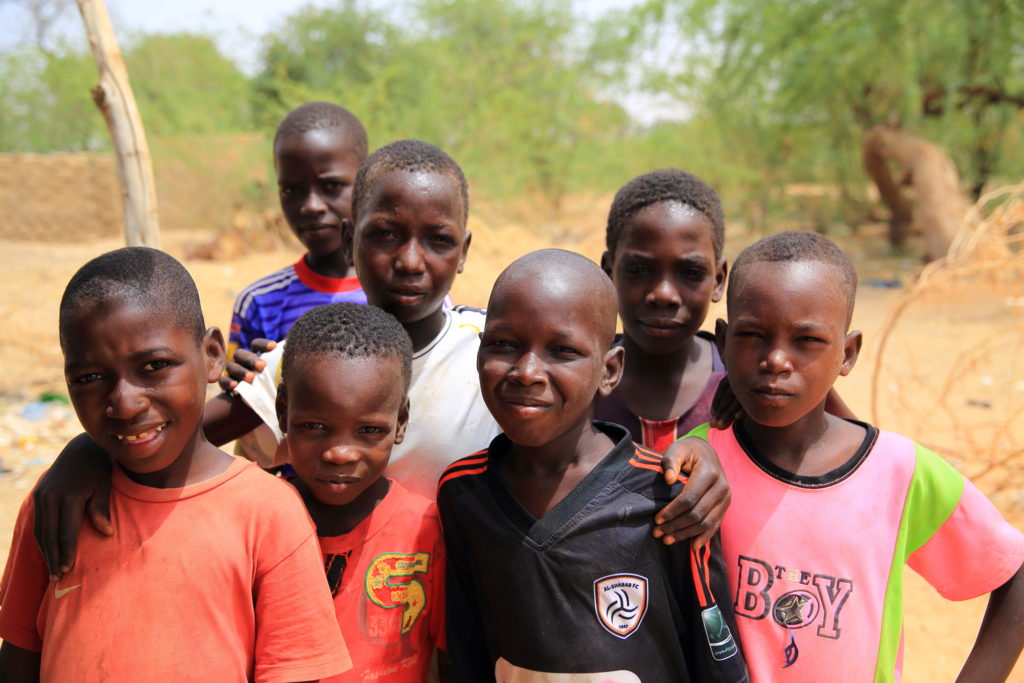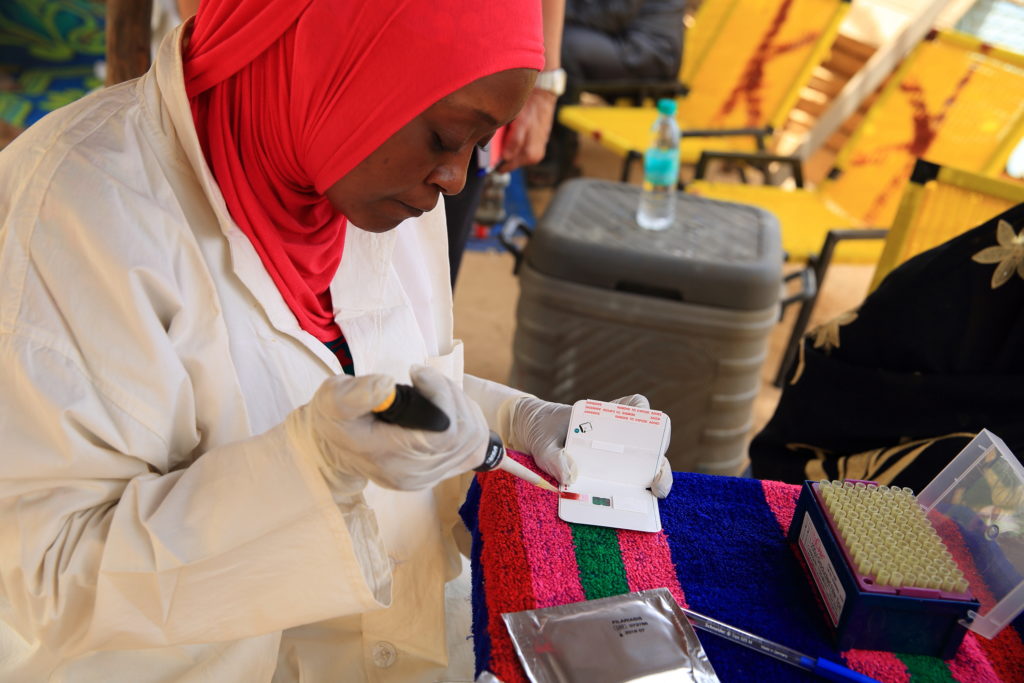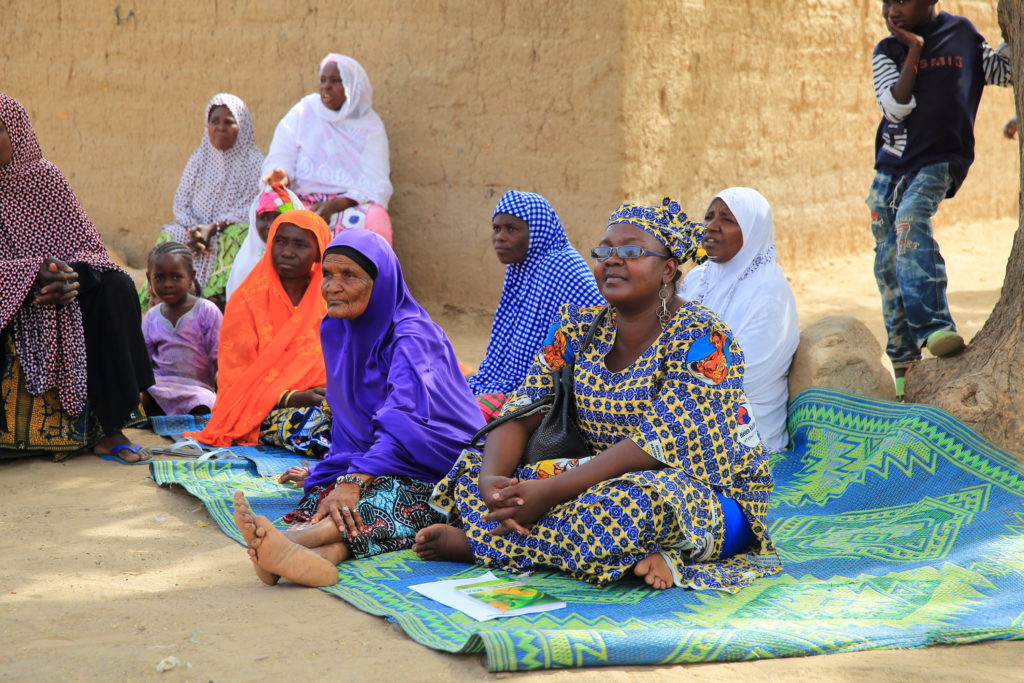NTDs in Niger: Current Epidemiological Status of Neglected Tropical Diseases Targeted through Preventive Chemotherapy
July 31st, 2018
When Niger, a West African country of 22 million people, began receiving USAID support through the FHI 360-managed END in Africa project to control or eliminate the seven neglected tropical diseases (NTDs) targeted through preventive chemotherapy (PC NTDs) in October 2010, there was much work to be done, as some diseases had become nationwide public health problems.
As of October 2010, the epidemiological situation of the seven NTDs was as follows:
- Bilharzia and Worms—the populations of 71 of the country’s 72 health districts (HDs) were suffering from bilharzia and three disease-causing worms—roundworms, whipworm and hookworms—and needed treatment for these.
- Trachoma and Elephantiasis—the populations of 62 and 54 HDs were suffering from trachoma and elephantiasis, respectively, and needed treatment
- River Blindness—5 HDs were still considered endemic for river blindness but did not need treatment, according to World Health Organization (WHO) guidelines.
A vast country consisting mostly of desert, Niger is surrounded by countries with conflicts (Libya, Mali, and Nigeria) that have spilled over and made large parts of the country unsafe. Villages, especially in the north of the country, are very far apart and sometimes health workers need to travel up to 170 km over sand and stones to reach the next village. Houses are widely dispersed within villages in the northern desert areas of the country; even within the same village, houses may be up to 5 km apart. The central zones are primarily populated by nomadic groups who change their locations weekly, sometimes daily, while community drug distributors (CDDs) working with the NTD program struggle to keep up with their movement to maintain high treatment coverage.

END in Africa’s Neglected Tropical Disease Prevention and Control Work Helps Keep Children Healthy in Niger. Photo: HKI
Despite these natural and safety obstacles, Niger has been able to implement NTD programs with relatively good results, supported by the END in Africa project consortium, led by FHI 360, which worked with in-country implementing partner Helen Keller International to provide financial, technical and administrative support to help the national NTD program (NTDP) manage integrated NTD efforts. This support has enabled the NTDP to overcome numerous challenges—temperatures up to 45o C (113o F), violent sandstorms, sudden drastic weather variations, security risks, long-distance travel on foot—to successfully reach populations at risk of the targeted NTDs, providing services that cure the diseases and prevent their spread among both adults, children, and infants.

END in Africa Project Director Bolivar Pou Visits a Neglected Tropical Disease Surveillance Site in Niger. Photo: HKI
In all, over 57 million people have been treated for the seven PC NTDS, and over 144 million treatments were administered during seven years of project implementation in Niger. Keep reading for a summary of Niger’s disease-specific achievements, as of September 2017.
River Blindness
Vector control efforts between 1974 and 2002 significantly reduced river blindness prevalence; therefore, mass drug administration for river blindness was never conducted. Surveillance in 2002–2015 continued to show very low disease prevalence. Evaluations are currently ongoing using WHO-recommended methodologies to demonstrate that transmission of river blindness has been interrupted in Niger. Subsequently, a dossier will be prepared and submitted to WHO for verification of elimination of river blindness as a public health problem in Niger.
Trachoma
Forty (40) of the 62 trachoma-endemic HDs have stopped treatment for trachoma after having achieved the WHO criteria for stopping treatment. Post-treatment surveillance (PTS) for trachoma has started in all 40 HDs and will continue for 3–5 years. The remaining 20 HDs are expected to stop MDA and start PTS in the next few years. PTS in all 62 trachoma-endemic districts will be followed by a pre-validation survey, after which a dossier will be prepared and submitted to WHO for verification of elimination of trachoma as a public health problem in the country.
Elephantiasis
Thirty-two (32) of the 54 elephantiasis-endemic HDs have stopped treatment for elephantiasis after having achieved the WHO criteria for stopping treatment. While PTS for elephantiasis has started in the 32 HDs and will continue for 4–6 years, treatment of at-risk populations will continue in the other 22 until they also reach the WHO criteria for stopping elephantiasis treatment. After achieving these criteria, 4-6 years of PTS will also be needed in the 22 HDs. Once all elephantiasis-endemic HDs complete PTS for elephantiasis, a dossier will be prepared and submitted to WHO for validation of elimination of elephantiasis as a public health problem in Niger.
Bilharzia and Worms
Current environmental circumstances and the disease nature of bilharzia and worms preclude their elimination at present. Thus, roundworms, whipworms, hookworms, and bilharzia are still public health problems in Niger, and END in Africa has helped the country to treat all at-risk populations at least once a year to keep disease prevalence low.
The Government of Niger has demonstrated a strong political commitment to the successful implementation of the country’s integrated NTD program (NTDP), providing tax exemptions for all logistical expenses and medicines and extra security for NTDP staff when they work in areas that may be unsafe. However, Niger will continue to need financial, technical and administrative support as the country embarks on the ‘last mile’ to eliminate river blindness, elephantiasis, and trachoma as public health problems while keeping low prevalence of bilharzia and disease-causing worms in at-risk communities.
The END in Africa Project
The eight-year (October 1, 2010–September 30, 2018) End Neglected Tropical Diseases in Africa (END in Africa) project is supported by the United States Agency for International Development (USAID) and managed by FHI360. The END in Africa project covers six countries (Burkina Faso, Cote d’Ivoire, Ghana, Niger, Sierra Leone and Togo) and seeks the control or elimination of seven neglected tropical diseases (onchocerciasis or river blindness, lymphatic filariasis or elephantiasis, trachoma or blinding eye infection, schistosomiasis or bilharzia, and three types of worms—roundworms, whipworms and hookworms). Over 221 million people have received treatment for at least one of the seven neglected tropical diseases (NTD) targeted through mass distribution of specific drugs, and over 464 million treatments have been administered in the 6 countries over seven years of project implementation (October 1, 2010–September 30, 2017).




